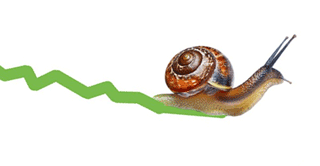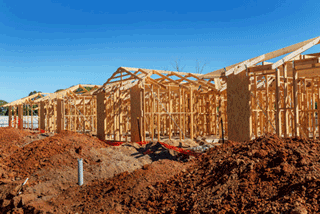Quote of the Week
“An investment in housing provides the dual benefits of significant job creation for the residential development sector, along with addressing the growing community need for government-assisted housing. Residential construction has the second-largest economic multiplier of all industries, supporting nine jobs for every $1m invested.”
Property Council of Australia, Queensland Executive Director, Chris Mountford
Australia In Top 20 Global Growth
 The Australian housing market is ranked in the Top 20 globally for growth, according to the Knight Frank Global House Price Index.
The Australian housing market is ranked in the Top 20 globally for growth, according to the Knight Frank Global House Price Index.
The half-year ranking, which tracks the movement in residential prices across 56 countries and territories worldwide, confirmed Australian property prices had increased 6% in FY2020.
The position is 37 places higher than last year and puts Australia’s ranking at No.19 globally.
Head of residential research Australia Michelle Ciesielski says:
“While annual price growth in Australia has fallen slightly from the previous quarter, growth is still positive and 1.4% higher than the average annual price change of 4.7% across the 56 countries and territories tracked in the index.
“Australia has dealt with the COVID-19 pandemic better than some other countries and territories around the world, with the length and severity of the lockdown not as strong, which partly explains its stable performance.”
New Zealand was the best performing country in Asia Pacific, with growth of 9% over the past year.
Building Approvals Strongest Since 2014
 Home building approvals rose by 8.5% in July – the biggest monthly increase since 2014.
Home building approvals rose by 8.5% in July – the biggest monthly increase since 2014.
The high-rise approvals component increased 23% in the month, resulting in a 12% increase in the number of dwellings approved, according to the Australian Bureau of Statistics.
While total dwelling approvals had only recovered around a third of the 20% decline since the pandemic began, there were 8,852 detached houses approved in July, a rate similar to that before the pandemic.
ABS director of construction statistics Daniel Rossi says the July figures “likely reflect improved consumer sentiment in May, on the back of falling virus cases and easing of restrictions”.
Approvals for private sector houses rose by 16% in Queensland; 14% in NSW and 6% in Victoria. Approvals fell in Western Australia by 3% and South Australia by 2%.
Westpac economist Matthew Hassan says: “The big picture is of a solid July lift that reflects a boost from the Federal Government’s HomeBuilder scheme and the cycling of direct disruptions from the COVID shutdown”.
Most Affordable Rents Since 2007: REIA
 Rental affordability is now at its highest level since December 2007, shows data from the Real Estate Institute of Australia.
Rental affordability is now at its highest level since December 2007, shows data from the Real Estate Institute of Australia.
The increased availability of rental properties and the decreased number of those looking during the coronavirus period has seen rents fall in some areas.
The percentage of income needed to meet rental payments fell to 23% in the June Quarter which is well below the benchmark of 30%, says the REIA.
According to the REIA report, the proportion of income needed to pay the median rent in NSW is 28%; in Victoria it is 23%; in Queensland and South Australia it is 22%. In WA rental affordability is down 0.7% on last year to 24%.
The figure is the highest in Tasmania at 29%, confirming the strength of the Apple Isle’s strongly performing property market and shortage of rentals. In the Northern Territory it is 20% and in the ACT it is 22%.
Nationally rents are down 0.5% on this time last year, though the ACT recorded a rise in rents in the June Quarter.
Economy Rebound: Growth Forecast
 The nation’s leading economists are forecasting growth of 0.35% in the September Quarter followed by a 1.4% increase in the December Quarter, heralding the return of a stronger economy.
The nation’s leading economists are forecasting growth of 0.35% in the September Quarter followed by a 1.4% increase in the December Quarter, heralding the return of a stronger economy.
The forecasts depend on a resurgence in consumer confidence and consumer spending.
Consumer spending fell by 12% in the June Quarter, leading to a 7% contraction of GDP, according to Westpac chief economist Bill Evans.
“It really is explained by consumer spending and the government policies around lockdown,” Evans says.
Unable to go out and spend during this time, consumers put the country into a “different kind of recession” – but increased their savings to 20%, he says.
Broadly, the country’s economic fundamentals are sound, says Matthew Peter, chief economist at QIC.
“We need to remember that the fall in economic activity was due to a lockdown of consumers and businesses,” says Peter.
With a higher level of savings now in place, households have plenty of spending power as the economy reopens.
HomeBuilder Benefits FHBs & Economy
 The $688 million HomeBuilder program benefits home-buyers and the country’s builders, tradies and the economy as a whole.
The $688 million HomeBuilder program benefits home-buyers and the country’s builders, tradies and the economy as a whole.
The stimulus scheme offers grants of $25,000 to build a new home, substantially renovate an existing home, or buy off-the-plan.
“There is still strong consumer demand for newly-constructed properties,” says Toby Balazs, CEO of realestateview.com.au.
Colliers managing director of Residential Tim Storey says the various government incentives available right now had made apartment purchase more affordable than ever, with first-home buyers having the biggest advantage.
“The pandemic has created a once-in-a-generation opportunity to enter the market in an outstanding location by presenting a range of incentives that remove the hurdle of the usual deposit – the greatest barrier for young buyers today,” he says.
“We have many buyers who have been renting in and around the CBD now moving to purchase an apartment and pay less on their mortgage than they are currently paying on rent.”




